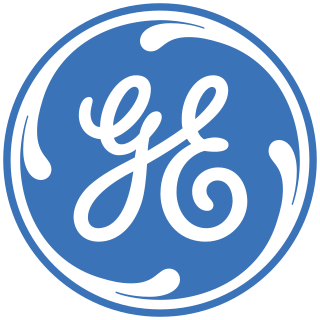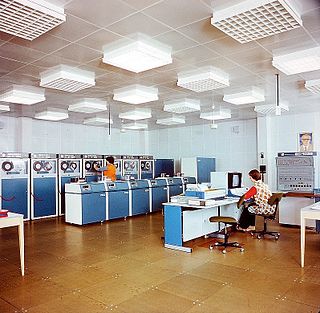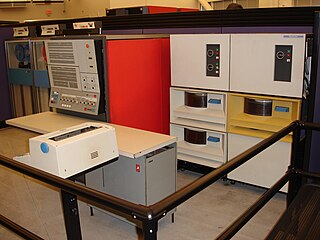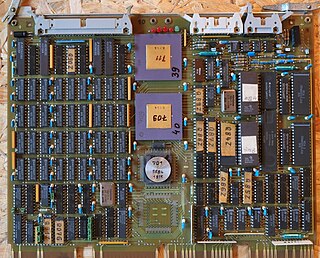
Minsk was a family of mainframe computers that were developed and produced in the Byelorussian SSR from 1959 to 1975.

Minsk was a family of mainframe computers that were developed and produced in the Byelorussian SSR from 1959 to 1975.
The MINSK-1 was a vacuum-tube digital computer that went into production in 1960. [1]
The MINSK-2 was a solid-state digital computer that went into production in 1962. [2]
The MINSK-22 was a modified version of Minsk-2 that went into production in 1965.
The MINSK-23 went into production in 1966.
The most advanced model was Minsk-32, developed in 1968. It supported COBOL, FORTRAN and ALGAMS (a version of ALGOL). This and earlier versions also used a machine-oriented language called AKI (AvtoKod "Inzhener", i.e., "Engineer's Autocode"). It stood somewhere between the native assembly language SSK (Sistema Simvolicheskogo Kodirovaniya, or "System of symbolic coding") and higher-level languages, like FORTRAN.
The word size was 31 bits for Minsk-1 and 37 bits for the other models.
At one point the Minsk-222 (an upgraded prototype based on the most popular model, Minsk-22) and Minsk-32 were considered as a potential base for a future unified line of mutually compatible mainframes — that would later become the ES EVM line, but despite being popular among users, good match between their tech and Soviet tech base and familiarity to both programmers and technicians lost to the proposal to copy the IBM/360 line of mainframes — the possibility to just copy all the software existing for it was deemed more important.

Fortran is a third generation, compiled, imperative programming language that is especially suited to numeric computation and scientific computing.
IBM mainframes are large computer systems produced by IBM since 1952. During the 1960s and 1970s, IBM dominated the computer market with the 7000 series and the later System/360, followed by the System/370. Current mainframe computers in IBM's line of business computers are developments of the basic design of the System/360.

A minicomputer, or colloquially mini, is a type of smaller general-purpose computer developed in the mid-1960s and sold at a much lower price than mainframe and mid-size computers from IBM and its direct competitors. In a 1970 survey, The New York Times suggested a consensus definition of a minicomputer as a machine costing less than US$25,000, with an input-output device such as a teleprinter and at least four thousand words of memory, that is capable of running programs in a higher level language, such as Fortran or BASIC.

Digital Equipment Corporation (DEC)'s PDP-10, later marketed as the DECsystem-10, is a mainframe computer family manufactured beginning in 1966 and discontinued in 1983. 1970s models and beyond were marketed under the DECsystem-10 name, especially as the TOPS-10 operating system became widely used.

VAX is a series of computers featuring a 32-bit instruction set architecture (ISA) and virtual memory that was developed and sold by Digital Equipment Corporation (DEC) in the late 20th century. The VAX-11/780, introduced October 25, 1977, was the first of a range of popular and influential computers implementing the VAX ISA. The VAX family was a huge success for DEC, with the last members arriving in the early 1990s. The VAX was succeeded by the DEC Alpha, which included several features from VAX machines to make porting from the VAX easier.

Computer operating systems (OSes) provide a set of functions needed and used by most application programs on a computer, and the links needed to control and synchronize computer hardware. On the first computers, with no operating system, every program needed the full hardware specification to run correctly and perform standard tasks, and its own drivers for peripheral devices like printers and punched paper card readers. The growing complexity of hardware and application programs eventually made operating systems a necessity for everyday use.

The IBM 704 is the model name of a large digital mainframe computer introduced by IBM in 1954. It was the first mass-produced computer with hardware for floating-point arithmetic. The IBM 704 Manual of operation states:
The type 704 Electronic Data-Processing Machine is a large-scale, high-speed electronic calculator controlled by an internally stored program of the single address type.

Norsk Data was a minicomputer manufacturer located in Oslo, Norway. Existing from 1967 to 1998, it had its most active period from the early 1970s to the late 1980s. At the company's peak in 1987, it was the second largest company in Norway and employed over 4,500 people.

General Comprehensive Operating System is a family of operating systems oriented toward the 36-bit GE-600 series and Honeywell 6000 series mainframe computers.
The Burroughs Large Systems Group produced a family of large 48-bit mainframes using stack machine instruction sets with dense syllables. The first machine in the family was the B5000 in 1961, which was optimized for compiling ALGOL 60 programs extremely well, using single-pass compilers. The B5000 evolved into the B5500 and the B5700. Subsequent major redesigns include the B6500/B6700 line and its successors, as well as the separate B8500 line.

The history of computing hardware in the Eastern Bloc is somewhat different from that of the Western world. As a result of the CoCom embargo, computers could not be imported on a large scale from Western Bloc.

The HP 2100 is a series of 16-bit minicomputers that were produced by Hewlett-Packard (HP) from the mid-1960s to early 1990s. Tens of thousands of machines in the series were sold over its twenty-five year lifetime, making HP the fourth largest minicomputer vendor during the 1970s.

BESM-6 was a Soviet electronic computer of the BESM series.

The ES EVM, or YeS EVM, also known in English literature as the Unified System or Ryad, is a series of mainframe computers generally compatible with IBM's System/360 and System/370 mainframes, built in the Comecon countries under the initiative of the Soviet Union between 1968 and 1998. More than 15,000 of the ES EVM mainframes were produced.

The HP 3000 series is a family of 16-bit and 32-bit minicomputers from Hewlett-Packard. It was designed to be the first minicomputer with full support for time-sharing in the hardware and the operating system, features that had mostly been limited to mainframes, or retrofitted to existing systems like Digital's PDP-11, on which Unix was implemented. First introduced in 1972, the last models reached end-of-life in 2010, making it among the longest-lived machines of its generation.

The IBM System/360 Model 30 was a low-end member of the IBM System/360 family. It was announced on April 7, 1964, shipped in 1965, and withdrawn on October 7, 1977. The Model 30 was designed by IBM's General Systems Division in Endicott, New York, and manufactured in Endicott and other IBM manufacturing sites outside of U.S.

The K 1820, full name RVS K 1820, cipher in the SM EVM of the former COMECON countries SM 1720, is a workstation developed in East Germany. VEB Robotron Elektronik Dresden began development of the K 1820 in 1986 and it went into serial production in 1990.
Mainframe computers are computers used primarily by businesses and academic institutions for large-scale processes. Before personal computers, first termed microcomputers, became widely available to the general public in the 1970s, the computing industry was composed of mainframe computers and the relatively smaller and cheaper minicomputer variant. During the mid to late 1960s, many early video games were programmed on these computers. Developed prior to the rise of the commercial video game industry in the early 1970s, these early mainframe games were generally written by students or employees at large corporations in a machine or assembly language that could only be understood by the specific machine or computer type they were developed on. While many of these games were lost as older computers were discontinued, some of them were ported to high-level computer languages like BASIC, had expanded versions later released for personal computers, or were recreated for bulletin board systems years later, thus influencing future games and developers.
Philco was one of the pioneers of transistorized computers. After the company developed the surface barrier transistor, which was much faster than previous point-contact types, it was awarded contracts for military and government computers. Commercialized derivatives of some of these designs became successful business and scientific computers. The TRANSAC Model S-1000 was released as a scientific computer. The TRANSAC S-2000 mainframe computer system was first produced in 1958, and a family of compatible machines, with increasing performance, was released over the next several years.

The history of computing in the Soviet Union began in the late 1940s, when the country began to develop its Small Electronic Calculating Machine (MESM) at the Kiev Institute of Electrotechnology in Feofaniya. Initial ideological opposition to cybernetics in the Soviet Union was overcome by a Khrushchev era policy that encouraged computer production.